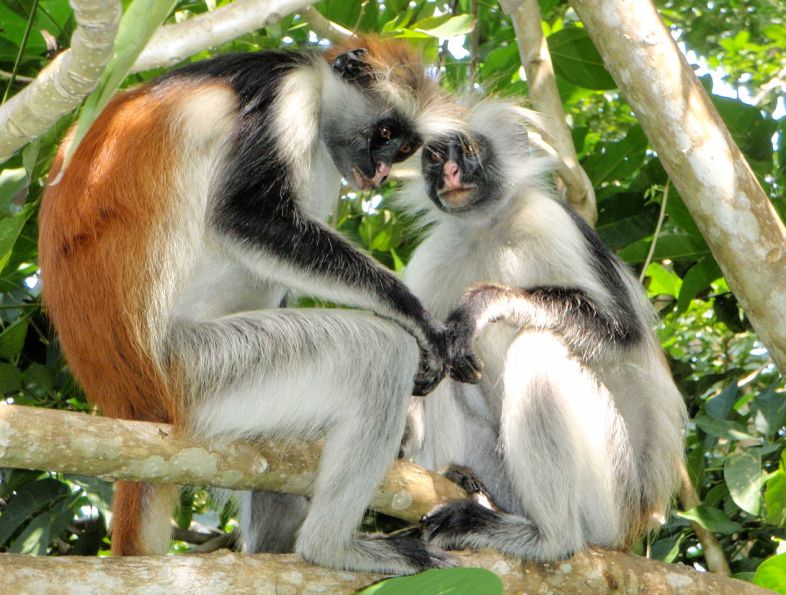Red Colobus monkeys in Jozani forest. Endemic to Zanzibar. Photo credit: Olivier Lejade
Africa is immensely rich in biodiversity. Its living organisms comprise around a quarter of global biodiversity and it supports the earth’s largest intact assemblages of large mammals, which roam freely in many countries. Africa’s biomes extend from mangroves to deserts, from Mediterranean to tropical forests, from temperate to sub-tropical and montane grasslands and savannahs, and even to ice-capped mountains.
A strategic plan for biodiversity was adopted globally in 2010 by the Parties to the Convention on Biological Diversity. The Strategic Plan for Biodiversity 2011-2020 is a ten-year framework for action by all countries and stakeholders to conserve biodiversity and enhance its benefits for people. It is comprised of a shared vision, a mission, strategic goals and twenty ambitious yet achievable targets, collectively known as the Aichi Biodiversity Targets. The Strategic Plan serves as a flexible framework for the establishment of national and regional targets and it promotes the coherent and effective implementation of the three objectives of the Convention on Biological Diversity. A mid-term assessment of the implementation of the plan, at the global scale, was published in the fourth edition of the Global Biodiversity Outlook (GBO-4).
For more information go to: https://www.cbd.int/doc/strategic-plan/2011-2020/Aichi-Targets-EN.pdf%20https://www.cbd.int/gbo/

